A robotic waterjet workstation comprises several key components that work together to facilitate precise cutting using waterjet technology.
Here are the primary components typically found in such a setup:
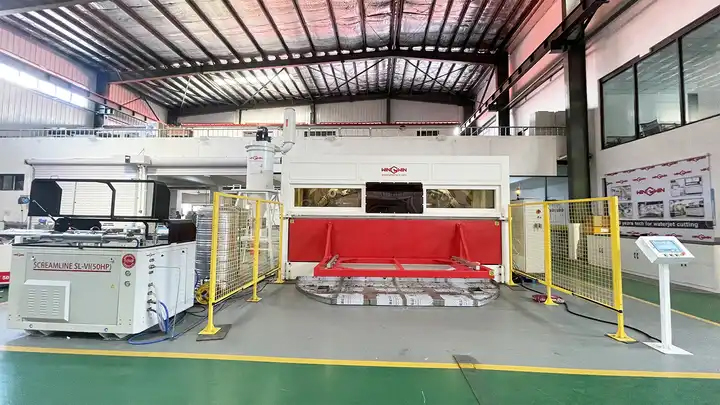
1.Waterjet Robotic Arm
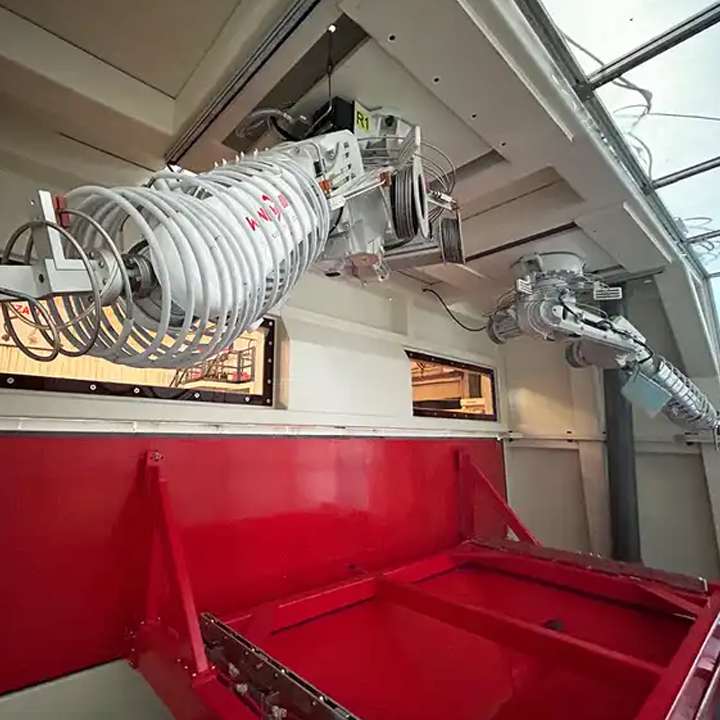
A waterjet robotic arm is a specialized robotic system integrated into a waterjet cutting setup to precisely control the movement of the waterjet cutting head. This robotic arm provides enhanced flexibility and accuracy in directing the high-pressure water stream for precise cutting in various directions and angles.
Key features and functions of a waterjet robotic arm include:
Multi-Axis Movement: The robotic arm is equipped with multiple axes of movement (usually 5 or 6 axes) that allow it to move in various directions, including rotation, extension, and articulation. This versatility enables the cutting head to reach different positions and angles for complex cutting tasks.
Programmability: These robotic arms are programmable, allowing for precise control and execution of cutting paths. Advanced software enables operators to program intricate cutting patterns and shapes, optimizing efficiency and accuracy.
High Precision: Waterjet robotic arms offer high repeatability and accuracy, ensuring consistent and precise cutting results even for complex geometries and tight tolerances.
Integration with Waterjet Cutting Systems: The robotic arm is integrated with the waterjet cutting machine, often with specialized attachments or end-effectors designed to hold and control the waterjet cutting head accurately.
Automation and Efficiency: By automating the cutting process, the robotic arm increases efficiency by reducing manual labor, minimizing errors, and enhancing productivity in waterjet cutting operations.
Safety Features: These systems often incorporate safety mechanisms, such as collision detection sensors and emergency stop functionalities, to ensure safe operation in the working environment.
2.Waterjet Cutting Head
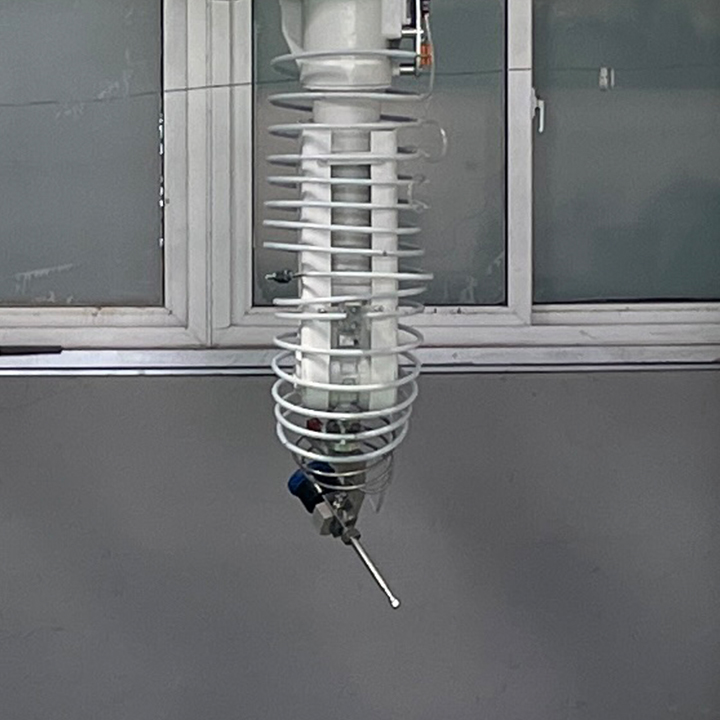
This is the part that emits the high-pressure water stream or water-abrasive mixture. It's mounted on the robotic arm and can move in multiple directions to perform intricate cuts.
3.Water Jet High-Pressure Pump
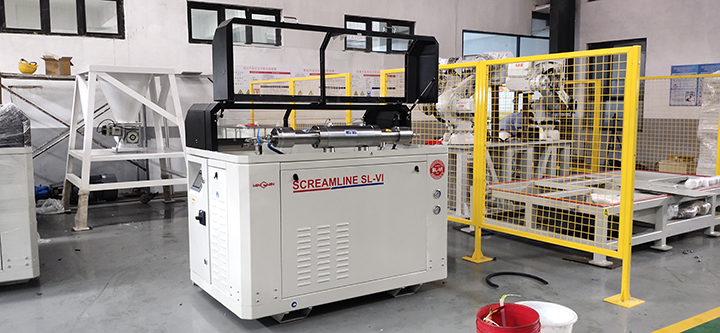
A high-pressure Water Jet pump in the context of a waterjet cutting system is specifically designed to generate and maintain the extreme pressure required for the cutting process. It's a critical component that pressurizes water to exceptionally high levels, enabling precise cutting of various materials.
The primary purpose of the pump is to generate high pressure within the water. Typically, these pumps produce pressures exceeding 90,000 pounds per square inch (PSI) for abrasive waterjet cutting applications. This immense pressure is essential for cutting materials such as metal, stone, glass, and composites.
Once pressurized, the pump delivers the high-pressure water through specialized high-pressure tubing or hoses to the cutting head. The water is expelled at high velocity through a small orifice in the cutting head, creating the focused cutting stream.
High-pressure pumps allow precise control over pressure and flow rates, enabling adjustments to cater to different materials and cutting requirements. Accurate pressure control ensures consistent and clean cuts.
4.Water Jet Control System and Software
A sophisticated control system governs the movement of the robotic arm and the operation of the waterjet cutting head. Specialized software allows for precise programming of cutting paths and patterns.
5.Water Jet Stationary Cutting Table
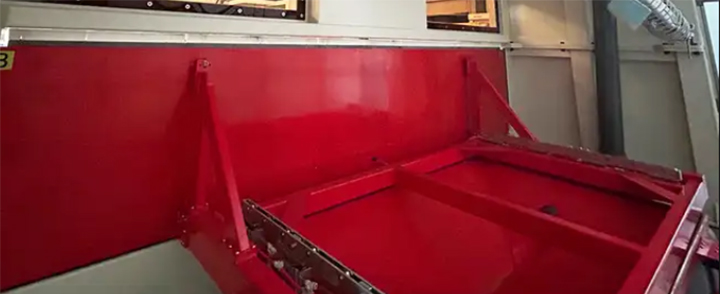
A stationary cutting table is a fundamental component within a waterjet cutting system that provides a stable and fixed platform for material placement during cutting operations. This table serves as the foundation on which materials are positioned and secured while the waterjet cutting process occurs, providing the necessary support and stability for materials during the cutting process. Its design and features contribute significantly to the accuracy, efficiency, and safety of the cutting operation, allowing for precise and controlled cutting of various materials across different industries.
6.Robot Waterjet Cooling and Filtration Systems
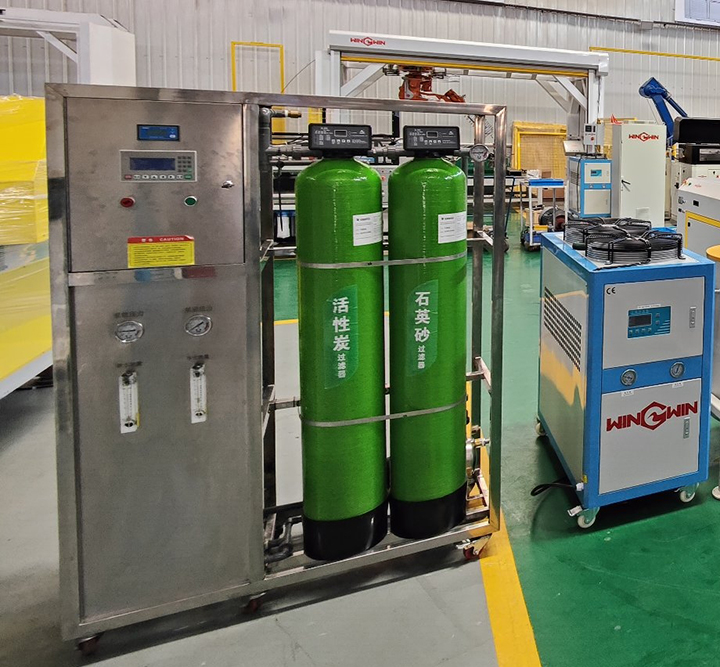
Waterjet cooling and filtration systems are crucial components within a waterjet cutting setup, designed to manage and maintain the quality of the cutting process by controlling water temperature and removing contaminants from the water used in the system.
Cooling Systems: Waterjet cutting generates heat due to the high-pressure water interacting with materials during cutting. Cooling systems help regulate the temperature of the water, preventing overheating of components like pumps and hoses. This ensures consistent performance and prolongs the lifespan of critical parts within the system.
Filtration Systems: Water used in the cutting process can contain impurities, debris, or abrasive particles that may affect cutting quality or damage components. Filtration systems remove contaminants, ensuring clean and debris-free water for efficient cutting and protecting system components from wear or damage.
Efficient cooling and filtration systems play a vital role in maintaining the precision and efficiency of waterjet cutting operations. They help safeguard the integrity of the cutting process by ensuring clean, cool, and debris-free water, thereby enhancing cutting quality, extending the lifespan of system components, and reducing maintenance requirements.
7.Robot Water Jet Vacuum Adsorption System
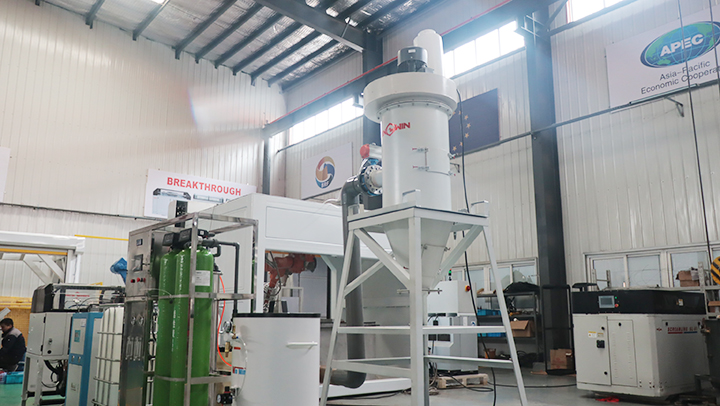
A robot water jet vacuum adsorption system is a specialized setup within a waterjet cutting environment that utilizes vacuum technology and adsorption principles to hold and secure materials during the cutting process, particularly when employing a robotic arm for manipulation.
Vacuum Generation: The system includes a vacuum source or pump that generates negative pressure to create suction forces required for material adherence.
The vacuum adsorption system in conjunction with the robotic arm enables the manipulation and positioning of materials with high precision and stability during waterjet cutting processes. By securely holding the material in place, it ensures accurate cutting and minimizes material movement or vibration, contributing to enhanced cutting quality and efficiency in various industries such as manufacturing, aerospace, and automotive.
8.Water Jet Safety Features
Safety measures such as enclosures, emergency stop buttons, and sensors ensure safe operation around the workstation.
9.Monitoring and Maintenance Tools
Systems for monitoring the cutting process and equipment condition are often integrated to ensure optimal performance and maintenance scheduling.
A robotic waterjet workstation's setup might vary depending on the specific manufacturer, model, and intended use. These components work together to enable precise, efficient, and versatile cutting of various materials in automotive, aerospace, manufacturing, and other industries.
 wwaterjet
wwaterjet